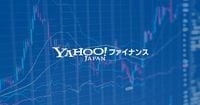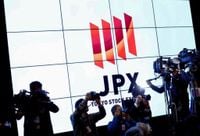On March 31, 2025, the Tokyo stock market experienced a significant decline, with the Nikkei average plummeting by 1,428.81 yen to close at 35,691.52 yen in the morning session. This marked a worrying trend as the market was heavily influenced by fears stemming from a downturn in U.S. stocks and ongoing concerns regarding tariffs proposed by former President Donald Trump.
During trading, the Nikkei index briefly dipped to 35,574.61 yen, reflecting a staggering drop of 1,545.72 yen, which pushed the index below the psychologically significant 36,000 yen mark. The day’s trading activity showcased a market dominated by selling, with little to no positive buying momentum observed, especially on the final day of the fiscal year.
Investor sentiment was notably affected by a steep decline in U.S. stock indices at the end of the previous week, driven by apprehensions surrounding inflation and a potential economic slowdown. This situation prompted a noticeable shift among investors in the Tokyo market, who became increasingly risk-averse.
Trump’s announcement on March 30, 2025, regarding reciprocal tariffs that would target all countries, not just a select few, further exacerbated market fears. As a result, the Nikkei average breached the 36,000 yen level, which had been viewed as a crucial support line, leading to a scenario where the market appeared to be in freefall.
“In the short term, there’s a growing concern about the speed of the decline, which has led to a temporary halt in the downward trend,” remarked a domestic securities strategist. However, he added that there were no signs of buying interest, and investor sentiment remained cold. This lack of enthusiasm was evident as nearly all sectors on the Tokyo Stock Exchange (TSE) saw declines.
The TOPIX index also closed down, finishing the morning session at 2,667.38 points, reflecting a drop of 3.26%. The total trading value in the TSE Prime Market was reported at 2 trillion 146.84 billion yen. All 33 sectors in the TSE experienced losses, with significant declines noted in sectors such as petroleum and coal products, as well as non-ferrous metals.
Major stocks, including Toyota Motor, Tokyo Electron, and Sony Group, all faced declines, contributing to the overall negative market sentiment. Even high-contribution stocks like Fast Retailing and SoftBank Group saw their values fall, indicating a widespread downturn.
In terms of market statistics, the number of declining stocks in the TSE Prime Market reached 1,581, accounting for 96% of the total, while only 43 stocks, or 2%, managed to rise, and 13 remained unchanged.
Market analysts are cautious about the immediate future. Takuma Ikeuchi, a market analyst at Tokai Tokyo Intelligence Lab, expressed that the market would likely remain stagnant until April 2, 2025, as investors awaited further clarity on the implications of Trump’s tariff announcement. “Given the current exchange rate levels, the benefits of a weaker yen are not anticipated, making it difficult to justify purchases from both an earnings and currency perspective,” he noted.
As the market grapples with these challenges, confidence in the Trump administration appears to be waning. Yasuhiro Uekusa, the Chief Strategist for Japan and the U.S. at Daiwa Securities, indicated that the market's trust in Trump was diminishing, prompting investors to engage in what he termed “panic selling.”
Hitoshi Asakawa, a Senior Strategist at Asset Management One, added that fears of stagflation in the U.S., characterized by the coexistence of high inflation and economic stagnation, were prompting a shift among investors from equities to bonds. This shift is indicative of a broader trend where market participants are seeking safer investment avenues amid rising uncertainties.
In summary, the Tokyo stock market's significant decline on March 31, 2025, reflects a confluence of factors including external pressures from the U.S. market, apprehensions regarding inflation, and the looming threat of new tariffs. With investor sentiment currently low and a lack of positive catalysts, the outlook for the near term remains uncertain. Observers will be closely monitoring developments as the market seeks to navigate these turbulent waters.







